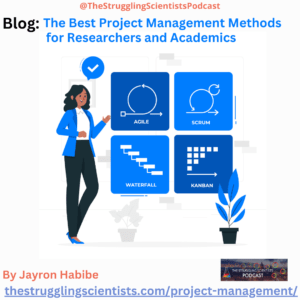This is the question my girlfriend and I asked ourselves when I told her I was planning on running multiple marathons in my life and I had just signed up for my first one, namely the Amsterdam marathon.
Given that we are both doing our PhDs on subjects related to metabolism and cardiovascular health we decided to delve into the available literature regarding marathon running in order to answer our question and this blog and our podcast episode will focus on some of the stuff we found.
Powered by RedCircle
What is a marathon?
A Marathon is defined as a long-distance racing event that typically takes place on roads with a distance of 42.195km. The idea of a marathon began with the legend of Pheidippides. It is said that he ran the 40 km (25 mi) to the battlefield near Marathon and back to Athens to announce the Greek victory over Persia in the Battle of Marathon (490 BCE) and then died upon delivering the news. This tale laid the ground work for the modern day long-distance running event we now know as the marathon.
Marathon running has become more and more popular in recent years with a reported 1.1 million participants in 2018 up from <0.5 million in 2001 (1). Given the steady increase of marathoners over the years it begs the question as to what is driving people to want to run 42.195kms.
Is it for health reasons?
If so, then let’s find out if marathon running actually is beneficial or not!

What does the Science say?
Benefits | Drawbacks |
Endorphin release2,3 | Increased risk of musculoskeletal injuries8 |
Less depressive than sedentary individuals4 | Hyponatremia9 |
Bigger stronger heart5,6 | Acute Kidney Injury (AKI)10 |
Lower resting heart6 | Inflammation11 |
Improved blood pressure and aortic stiffness7 | Heart fibrosis and calcifications12,13 |
Table : Benefits and drawbacks of Marathon running.
As of writing this blog Pubmed contained > 4300 scientific articles which included the word “Marathon”. While it is obviously impossible to go through all the literature on marathon running, we summarized some of the major results from these articles in the table above regarding the pros and cons of marathons.
The benefits
Endorphin release and less depressive mood
One of the main benefits to running is the feeling known as runner’s high. Runner’s high refers to the euphoric feeling endurance runners can get during running which is caused by the release of endorphins by the body. Endorphins are neurochemicals that stimulate the reward system of the brain and function much like opioids, and can be released during or following aerobic exercise (2). These endorphins suppress pain and stimulate people’s moods and can attenuate depression (3). Regarding the marathon, research has shown that marathoners are less depressive compared to sedentary controls (4).
Bigger, stronger heart
Marathon running being the prolonged endurance exercise that it is brings with it several benefits with regards to heart and vasculature. One of the modifications that occurs to the heart with high amount of endurance training is enlargement of the heart or cardiac hypertrophy (5, 6).
In different heart diseases hypertrophy is pathological, however with endurance training the hypertrophy can actually be beneficial. Through exercise the heart enlarges gaining more heart muscles, which allows it to pump more oxygen rich blood during exercise to your muscles to support your exercise.
This is a beneficial modification for your exercise performance as your muscles need sufficient oxygen when running a marathon. However, when not exercising, this heart enlargement leads to a reduced heart rate in order to maintain a normal cardiac output during rest (6).
Reduces blood pressure and improves vascular age
Additionally, running a marathon has also demonstrated benefits regarding blood pressure and aortic stiffening (7). It has been shown that blood pressure decreases with exercise and that aortic stiffening is also improved.
This was shown in a study using 138 first-time marathon runners and they observed that an improvement in vascular age based on the stiffening of roughly 4 years.
Older slower individuals seemed to benefit the most from this.
The drawbacks
Increased musculoskeletal injuries
Regarding the many drawbacks associated with running a marathon the most obvious is the increased risk of musculoskeletal injuries. These injuries can vary from person to person but generally involve: knees, tendons, hips, joints, ligaments, and the plantar of the foot (8).
It’s also known that newer runners are more prone towards developing these injuries than more experienced runners presumably due to inefficiencies or flaws in running form or by running more than their body can handle when they start.
Hyponatremia
Hyponatremia refers to a low concentration of Sodium in your blood stream. This is common with endurance running as the body sweats salt which contains sodium leading to reduced concentration of it in runners. If the sodium concentrations go below 110 mmol/L then you are at risk of seizures, nervous system shut down and potentially death (9).
Because of this its imperative that marathoners take drinks with electrolytes such as sodium in them to compensate for the loss of sodium. However, studies show that marathoners finish a marathon with significantly lower sodium concentration than at the start of the run. This does return to normal values a day or 2 after the marathon but can be dangerous during and immediately after the marathon.
Acute kidney injury
One of the more surprising findings from marathoners is that they develop significantly high serum concentrations of creatinine which indicate acute kidney injury (AKI). AKI can be divided into different stages and for most marathoners they show signs of stage 1 AKI, however some runners may also reach stage 2.
Stage-1 AKI is defined as a 1.5- to 2-fold increase in serum creatinine, whereas stage-2 is defined as a 2-3-fold increase. It is still unclear what the mechanism(s) leading to AKI in marathoners are but it’s theorized that it may be either reduced cardiac output going to the kidneys or increased body temperature (10).
Inflammation
What is also interesting to note is the increase of inflammatory markers such as IL-6, IL-8 in marathoners immediately following a marathon. However, what is interesting is that nutrition is associated with either pro or anti-inflammatory markers in marathoners (11).
Specifically, increased daily energy intake, carbs, fiber, and vitamins and minerals associated with reduced pro- markers like IL-8, while some associated to increased anti-inflammatory markers such as IL-10.
Heart fibrosis, atherosclerosis, and calcifications
In the benefits section we listed the beneficial modifications that occur to the heart and vasculature of marathoners, however there are also harmful modifications associated with marathon running.
Veteran runners frequently present with abnormal cardiac remodeling which associates with risk of myocardial fibrosis and coronary calcification. Atrial fibrillation is also commonly associated with excessive exercise alongside seemingly diminished exercise -associated longevity (12).
Lastly, it should also be noted that while moderate exercise is beneficial for the heart and functions in a cardioprotective manner it would appear that too much exercise may actually be detrimental to heart health. In men excessive exercise is also associated with increased atherosclerosis (13).
Discussion/ Conclusion
The drawbacks to running a marathon are numerous while the benefits are few. Running a marathon brings with it not only short-term drawbacks, but potentially long-term health risks as well.
These aspects should really be considered thoroughly before registering for your first or next marathon.
In addition, many of the benefits associated with training for and completing a marathon could potentially also be achieved at shorter distances up to the half marathon already. This makes the running a marathon for your health seem unnecessary if you can become healthier by running “shorter” distances while not risking your kidneys, heart or death by hyponatremia.
Marathon running is not a means to becoming healthy, but should be seen more as a significant stress test to the body which requires you to be fit and healthy in order to survive it.
While successfully completing a marathon may give you a temporary dose of endorphins making you feel great it also potentially puts you at risk for numerous injuries and long-term health problems if you are not careful in your preparation leading up it.
While we here at the The Struggling Scientists are not sports physicians or coaches, it is still solid advice if you are considering doing a marathon to take it easy and place your health at the forefront of your training.
Before jumping into something as ambitious and challenging as a marathon consider completing multiple 5, 10, 16 and 21 Km runs/races first in order to have a better sense of your overall fitness and what is realistically achievable for you with the marathon.
This includes knowing your pace for all the aforementioned distances, multiple instances of completing each distance, a realistic pace and finish time for your marathon effort, an appropriate training plan for your fitness level and marathon pace, and sufficient time to train and build up fitness safely.
With that said I hope this provided you with some handy information, and the references I discuss in this blog are located at the bottom in case you want to check them out yourself. If you’d rather listen to us discuss some of these topics you can also check out our episode all about marathon running here.
References
- https://racemedicine.org/the-state-of-running-2019/
- Raichlen DA, Foster AD, Seillier A, Giuffrida A, Gerdeman GL. Exercise-induced endocannabinoid signaling is modulated by intensity. Eur J Appl Physiol. 2013 Apr;113(4):869-75. doi: 10.1007/s00421-012-2495-5. Epub 2012 Sep 19. PMID: 22990628.
- Meyer JD, Crombie KM, Cook DB, Hillard CJ, Koltyn KF. Serum Endocannabinoid and Mood Changes after Exercise in Major Depressive Disorder. Med Sci Sports Exerc. 2019 Sep;51(9):1909-1917. doi: 10.1249/MSS.0000000000002006. PMID: 30973483; PMCID: PMC6727944.
- Roeh A, Lembeck M, Papazova I, Pross B, Hansbauer M, Schoenfeld J, Haller B, Halle M, Falkai P, Scherr J, Hasan A. Marathon running improves mood and negative affect. J Psychiatr Res. 2020 Nov;130:254-259. doi: 10.1016/j.jpsychires.2020.08.005. Epub 2020 Aug 15. PMID: 32854076.
- Arbab-Zadeh A, Perhonen M, Howden E, Peshock RM, Zhang R, Adams-Huet B, Haykowsky MJ, Levine BD. Cardiac remodeling in response to 1 year of intensive endurance training. Circulation. 2014 Dec 9;130(24):2152-61. doi: 10.1161/CIRCULATIONAHA.114.010775. Epub 2014 Oct 3. PMID: 25281664; PMCID: PMC5698012.
- Nystoriak MA, Bhatnagar A. Cardiovascular Effects and Benefits of Exercise. Front Cardiovasc Med. 2018 Sep 28;5:135. doi: 10.3389/fcvm.2018.00135. PMID: 30324108; PMCID: PMC6172294.
- Bhuva AN, D’Silva A, Torlasco C, Jones S, Nadarajan N, Van Zalen J, Chaturvedi N, Lloyd G, Sharma S, Moon JC, Hughes AD, Manisty CH. Training for a First-Time Marathon Reverses Age-Related Aortic Stiffening. J Am Coll Cardiol. 2020 Jan 7;75(1):60-71. doi: 10.1016/j.jacc.2019.10.045. PMID: 31918835.
- Lopes AD, Hespanhol Júnior LC, Yeung SS, Costa LO. What are the main running-related musculoskeletal injuries? A Systematic Review. Sports Med. 2012 Oct 1;42(10):891-905. doi: 10.1007/BF03262301. PMID: 22827721; PMCID: PMC4269925.
- Knechtle B, Chlíbková D, Papadopoulou S, Mantzorou M, Rosemann T, Nikolaidis PT. Exercise-Associated Hyponatremia in Endurance and Ultra-Endurance Performance-Aspects of Sex, Race Location, Ambient Temperature, Sports Discipline, and Length of Performance: A Narrative Review. Medicina (Kaunas). 2019 Aug 26;55(9):537. doi: 10.3390/medicina55090537. PMID: 31455034; PMCID: PMC6780610.
- Mansour SG, Verma G, Pata RW, Martin TG, Perazella MA, Parikh CR. Kidney Injury and Repair Biomarkers in Marathon Runners. Am J Kidney Dis. 2017 Aug;70(2):252-261. doi: 10.1053/j.ajkd.2017.01.045. Epub 2017 Mar 28. Erratum in: Am J Kidney Dis. 2017 Sep;70(3):452. PMID: 28363731; PMCID: PMC5526736.
- Passos BN, Lima MC, Sierra APR, Oliveira RA, Maciel JFS, Manoel R, Rogante JI, Pesquero JB, Cury-Boaventura MF. Association of Daily Dietary Intake and Inflammation Induced by Marathon Race. Mediators Inflamm. 2019 Oct 7;2019:1537274. doi: 10.1155/2019/1537274. PMID: 31686980; PMCID: PMC6800895.
- O’Keefe EL, Torres-Acosta N, O’Keefe JH, Lavie CJ. Training for Longevity: The Reverse J-Curve for Exercise. Mo Med. 2020 Jul-Aug;117(4):355-361. PMID: 32848273; PMCID: PMC7431070.
- Kermott CA, Schroeder DR, Kopecky SL, Behrenbeck TR. Cardiorespiratory Fitness and Coronary Artery Calcification in a Primary Prevention Population. Mayo Clin Proc Innov Qual Outcomes. 2019 May 27;3(2):122-130. doi: 10.1016/j.mayocpiqo.2019.04.004. PMID: 31193905; PMCID: PMC6543459.










One Response
Thanks for this informative and science-based readable article.
At the end, who was Pheidippides? Some enthusiastic running-beginner that fell into a trap of overexercising?
Nope. He was a professional runner, making 20-30 km and longer distances on daily basis.
It was not a single marathon that killed him, but his own lifestyle.
My goal in running is just to make 10 km out of fun, chatting with a jogger-mate. And it feels good and healthy.